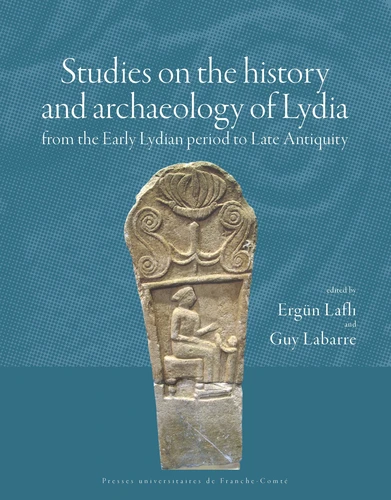Etudes sur l'histoire et l'archéologie de Lydie de la période proto - lydienne à la fin de l'Antiquité
Par : ,Formats :
- Paiement en ligne :
- Livraison à domicile ou en point Mondial Relay indisponible
- Retrait Click and Collect en magasin gratuit
- Réservation en ligne avec paiement en magasin :
- Indisponible pour réserver et payer en magasin
- Nombre de pages542
- PrésentationBroché
- FormatGrand Format
- Poids1.52 kg
- Dimensions22,0 cm × 28,0 cm × 2,0 cm
- ISBN978-2-84867-953-2
- EAN9782848679532
- Date de parution24/02/2023
- CollectionInstitut des sciences et techn
- ÉditeurPUFC
Résumé
Lydia, lying between the Aegean coast and the Anatolian plateau, has been associated since Antiquity with the Pactolus river, which carried gold from the Tmolus mountain, and with the wealth of Croesus. Populated by Lydians and Maeonians, and marked by the presence of Persians, Greeks, Romans, and Byzantines, it has attracted the attention of researchers since the end of the 18th century. This book aims to cover the chronology of Lydian studies from the protohistoric period to the beginning of the Byzantine period and to bring together the contributions of international researchers and scholars from a wide range of disciplines that includes history, archeology, epigraphy, and numismatics, and from different perspectives.
The various studies discuss society, social structures, military aspects, economy, religion, arts, architecture, and material culture. This diachronic approach makes it possible in particular to question continuity and discontinuity between the Hellenistic, Roman, and Byzantine periods, as well as with those that preceded them.
The various studies discuss society, social structures, military aspects, economy, religion, arts, architecture, and material culture. This diachronic approach makes it possible in particular to question continuity and discontinuity between the Hellenistic, Roman, and Byzantine periods, as well as with those that preceded them.
Lydia, lying between the Aegean coast and the Anatolian plateau, has been associated since Antiquity with the Pactolus river, which carried gold from the Tmolus mountain, and with the wealth of Croesus. Populated by Lydians and Maeonians, and marked by the presence of Persians, Greeks, Romans, and Byzantines, it has attracted the attention of researchers since the end of the 18th century. This book aims to cover the chronology of Lydian studies from the protohistoric period to the beginning of the Byzantine period and to bring together the contributions of international researchers and scholars from a wide range of disciplines that includes history, archeology, epigraphy, and numismatics, and from different perspectives.
The various studies discuss society, social structures, military aspects, economy, religion, arts, architecture, and material culture. This diachronic approach makes it possible in particular to question continuity and discontinuity between the Hellenistic, Roman, and Byzantine periods, as well as with those that preceded them.
The various studies discuss society, social structures, military aspects, economy, religion, arts, architecture, and material culture. This diachronic approach makes it possible in particular to question continuity and discontinuity between the Hellenistic, Roman, and Byzantine periods, as well as with those that preceded them.











